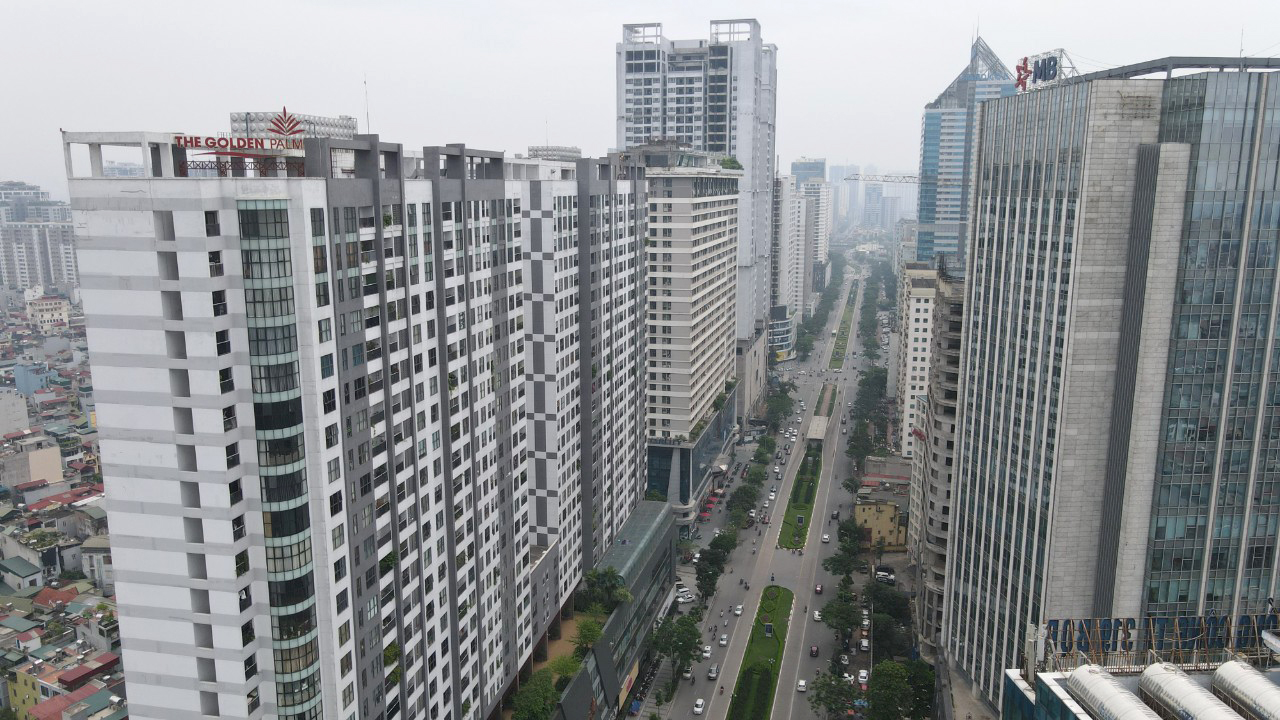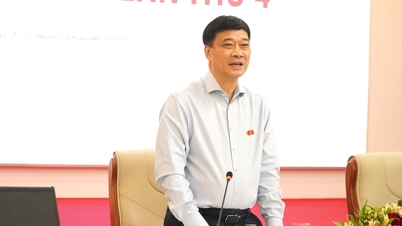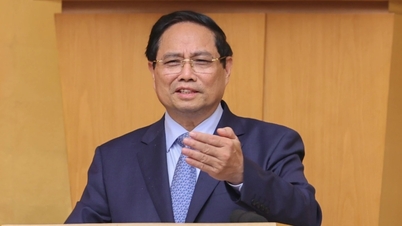N THE LINES THAT CAUSE RESENTATION
To this day, the consequences of the Thu Thiem incident (Thu Duc City, Ho Chi Minh City) are still lingering. The Government Inspectorate has had two conclusions, then the Central Inspection Committee and the Politburo have also concluded and decided to discipline many senior leaders related to the Thu Thiem project, but the settlement of rights for people whose land is located within 4.3 hectares (in Ward 1, Binh An Ward, District 2, now Thu Duc City) outside the planning boundary but was reclaimed by the City government, has not yet ended.

The arbitrary planning adjustment on Le Van Luong Street ( Hanoi ) has been going on for a long time and left many consequences.
The cause originated from the adjustment of the Thu Thiem planning. On June 4, 1996, Prime Minister Vo Van Kiet signed Decision 367 approving the planning for the construction of the new urban area of Thu Thiem in Thu Duc District (now Thu Duc City) with a new urban area of 770 hectares, a resettlement area of 160 hectares, and a population of 245,000 people... On September 16, 1998, the Ho Chi Minh City People's Committee approved the detailed planning 1/2000 in Decision No. 13585, in which the area and boundary were arbitrarily adjusted to increase 4.3 hectares in Quarter 1, Binh An Ward, District 2. The Government Inspectorate and the Ho Chi Minh City People's Committee later admitted that this adjustment was not in accordance with the planning approved by the Prime Minister.
Similarly, the 160-hectare resettlement area with nearly 114 hectares not included in the 367 planning approved by the Prime Minister, the Ho Chi Minh City People's Committee still allocated land according to the detailed planning 1/500 even though the adjustment to the detailed planning 1/2,000 had not been approved. In addition, in some projects, the city allocated land to enterprises without proper business licenses, without proper authority, and without auction... This led to insufficient land for resettlement according to the planning, breaking the approved planning. The investment in the construction of the new urban area of Thu Thiem was stalled, and people complained for a long time but could not be resolved. The city government in 2018 also admitted that the "key" leading to violations was that when the city implemented the adjustment, it was not strict and did not ask for the Prime Minister's opinion.
The deadlocks in long-standing land disputes are mostly related to planning maps. For example, the case of Ms. Nguyen Thi Kim Buu (Hamlet 1, Song Trau Commune, Trang Bom District, Dong Nai) and nearly 50 households in Song Trau and Dong Hoa Communes (Trang Bom District). The households said that the original planning of Bau Xeo Industrial Park did not include their family's land but only the rubber forest of Dong Nai Rubber Company, but the investors found a way to take their land. Meanwhile, the Dong Nai provincial government affirmed that the construction of Bau Xeo Industrial Park was "in accordance with the law". Right and wrong were not resolved, only knowing that after nearly 20 years, the people who owned the land still refused to receive compensation and continued to file lawsuits. The land that was forcibly recovered by the government remained abandoned.
Arbitrary adjustment of planning
Land use planning and planning is actually the decision of what land is to be used for. Land recovery and conversion, therefore, all start from planning.
In 2019, the 14th National Assembly conducted supreme supervision of urban land planning, management and use. The supervision period was limited to 5 years, from 2013 when the current Land Law took effect, to 2018. The scope of supervision was also limited to urban land planning, management and use. However, the numbers from the supervision results have made many people think.
The monitoring team's report shows that according to incomplete reports in localities, the whole country has 1,390 projects with adjusted planning from 1 to 6 times. The adjusted planning often tends to increase the height, number of floors, increase floor area, divide the apartment area, increase construction density and land use coefficient. Along with that is the reduction of public green land area, technical infrastructure land or adding housing functions to commercial and office land lots, increasing land rent difference, increasing construction density and population size.
There are many examples of "shredded" planning in Hanoi or Ho Chi Minh City that are now becoming a "thorn" and causing many consequences, such as in Linh Dam urban area or Le Van Luong street. Long-term lax management has caused the Linh Dam model urban area, which is admired for its modern planning, synchronous infrastructure, ideal population density... to be destroyed by the projects of "plow tycoon" Le Thanh Than. Similarly, the arbitrary adjustment of planning, causing a 1 km long road to have to "carry" 40 high-rise buildings, has turned Le Van Luong street into a "road of suffering" in the frustration of the people...
The National Assembly in the subsequent supervision resolution assessed: the quality of urban planning is still low, lacking in uniformity, lacking long-term vision, not keeping up with socio-economic development and urbanization speed, leading to multiple planning adjustments. There are cases where adjustments are arbitrary, according to the interests of investors, affecting the environment, landscape, architecture, technical infrastructure, society and the legitimate interests of the community.
Head of the Delegation Affairs Committee Nguyen Thi Thanh, in a session of the National Assembly Standing Committee, said: "Sometimes, only 3-4 people sitting together can adjust the planning." Although it was just a "joke", what Ms. Thanh said fully reflects the arbitrary adjustment of planning, which has been the source of frustration and complaints for a long time.
Transparency is key
The key issue lies in the transparency of planning and land use planning; at the same time, it is necessary to minimize arbitrary planning adjustments, especially those that are "shadowed" by interest groups. The policy requirements are very clear, but the design and implementation of policy tools are always a big problem.
According to the current Land Law, local land planning must be consulted with the community and people, and after the planning is approved, it must be made public. However, the Vietnam Provincial Governance and Public Administration Performance Index (PAPI) 2022 report, which was just released in early April, showed that less than 20% of respondents knew about land planning in their locality. In Da Nang, the figure was only below 10%. Provinces with high rates such as Binh Duong and Thua Thien-Hue were only at nearly 30%. It is worth noting that this index has been maintained at a low level for more than 10 years since the PAPI report was conducted. These are "very worrying" numbers. Dr. Dang Hoang Giang, who represented the research group of the Government's Summary Report to collect public opinions on the revised Land Law, said that there have been more than 12 million comments from the people, of which more than 1 million were related to planning and land use plans. Since the first examinations, the National Assembly's Land Law review agency, the Economic Committee, has repeatedly emphasized the requirement that the consultation and public disclosure of planning and land use plans, especially at the local level, must ensure the principles of publicity and transparency, avoiding people from not knowing about planning adjustments, which may affect land-related rights and cause complaints. In particular, the public disclosure of planning maps and land use plans to collect public opinions as well as diversifying forms of publicity.
These requests have been partially accepted. The latest draft of the Land Law to be submitted to the National Assembly at the upcoming May session has more specific regulations on the contents, time for collecting opinions, publicizing planning, land use plans as well as planning adjustments. Mechanisms, policies and laws are becoming more complete and perfect. However, the final issue still lies in "whether the government wants to implement it or not". (to be continued)
Source link



![[Photo] Binh Trieu 1 Bridge has been completed, raised by 1.1m, and will open to traffic at the end of November.](https://vphoto.vietnam.vn/thumb/1200x675/vietnam/resource/IMAGE/2025/10/2/a6549e2a3b5848a1ba76a1ded6141fae)
































































































Comment (0)